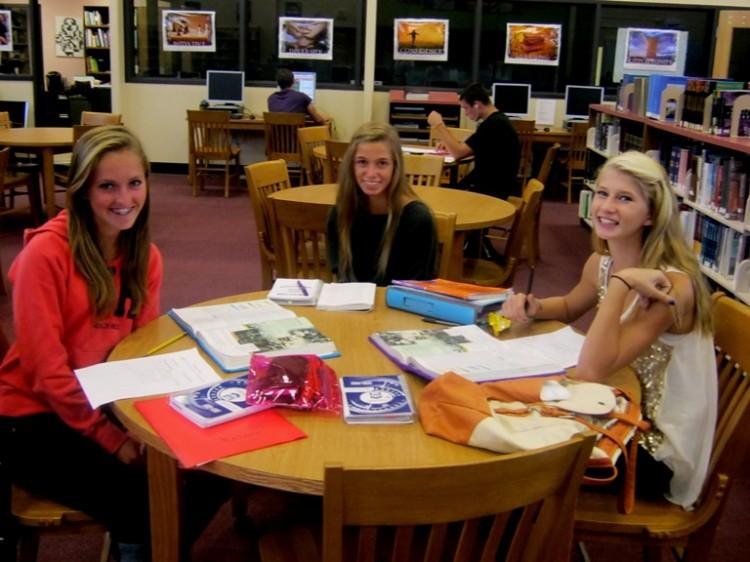Written by: Maina Carey & Mary Muratori
Teachers can have a totally different perspective on school work, and school in general than the students. The Junior Portfolio is not all fun and games for the teachers either. Whether it’s the student doing the work, or the teacher grading it, the stress from the portfolios can be very heavy at times.
Most teachers had the same ideas on what exactly this portfolio is and how to prepare for it. “It is an opportunity for students to show what they have learned, and how they have grown these past three years. It’s going to be cool and help kids own their education, because the students discuss as a class what they have learned,” says Ms. Frydenborg. Most teachers feel very optimistic about this project for the students and are very prepared to help the students at any chance they get.
Mr. Luther states ,“the teachers prepare for it by giving the assignments out, essentially, with rubrics, and providing feedback.” Similarly, Mrs. Shugrue says, “we’ve created these projects to add rubrics too. There will be about four projects, and if the student features the project, then we will complete the rubric.” It seems as though, all the teachers will be putting a lot of effort into these portfolios. They, too, want the students to do well. Just like any other school work, and or project, there are skills required when preparing and completing the junior portfolio. “Reading, writing, and speaking are all skills needed to complete this project, mainly,” Mr. Graham told us.
Ms. Frydenborg gave a great piece of advice. “Have confidence in your work. It doesn’t need to be ‘A+’ work, just your work. Your work shows who you are and what you have accomplished as a student.” When asked what the hardest aspect for the students would be, most of the teachers gave different answers, but Mrs Shugrue did a great job of summing it up- “Keeping all of their work from the past three years, being able to reflect and explain your learning, taking responsibility to collect and keep their work, and which topics/projects/work to actually choose. (It) Doesn’t have to be perfect grades, it just has to show work and progress.”
In the end, we asked each teacher, if the portfolio was really as bad as ‘everyone’ says. “It depends on the student and attitude of the student,” says Mrs. Frydenborg. Mrs. Peterson also had a good outlook on the question. “No, it will not be as bad as the students think. We are all learning about this process together.” Some teachers were unsure because no one has actually completed the portfolio yet. Mrs. Shugrue and Mr. Luther both agreed that it would not be that hard either. “It’s very simple because students will have so much work to pick from. Plus the students can work on it in advisory.”
Although students have a lot of work to collect and keep on hand, teachers have a lot of preparing and organizing to do as well. This is all very new for them as well to the students. Some students that will be juniors in the future also gave advice, and showcased an alternative point of view.
Sophomore Celia Lacross explains that the Junior Portfolio is, “- a set of work you have done in Morgan over three years. Each piece of writing or work gets a rubric and you have to have seven rubrics.” It sounds pretty close to what most teachers said. But Freshman, Morgan Leask says, “I don’t know. It’s something that you put your work into.” Are the teachers explaining the project fully? Other students interviewed said exactly what Morgan did.
Sadly, lots of the students aren’t preparing for the Junior Portfolio. Sarah Dwyer, sophomore, says that because she doesn’t know what it is, she doesn’t know how to prepare. But in reality, it is pretty easy. “I prepare by gathering pieces of information that I’ve done and putting them in the advisory room in the designated folders,” Celia Lacross says. Morgan Leask claims he is preparing by trying to do well in school. It’s pretty universal advice and effort is really important in this project.
I’ve heard that the Junior Portfolio is a complete nightmare. It seems like everyone says that! But Sarah Dwyer says, “probably not, if you are comfortable talking in front of people.” It’s true. In order to complete your portfolio, you must give a presentation in front of a panel of teachers. Celia Lacross agrees with Sarah on this issue. “It’s not that bad at all because you have three years to prepare. It’s a little overwhelming, but you are given a long time to do it, so it’s better,” she says.
Good news, future juniors! The Junior Portfolio is nothing to stress about. As long as you put effort into your projects and stay organized, you will do great.


